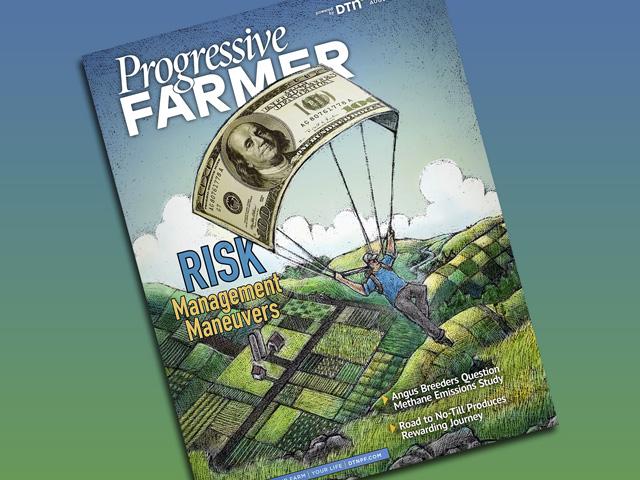Ag Weather Forum
Heavy Snow, Freezing Rain on Tap for Country's Midsection This Weekend
A big-time storm system is moving into the Pacific Northwest on Jan. 3. This system is bringing plenty of valley rain and mountain snow to the region, but it will have much greater impacts to the country's midsection on Jan. 4-6.
This storm system is on the leading edge of a major pattern change that will usher in a much colder regime east of the Rockies through at least the middle of January, if not the entire month. And it will have all the impacts that a major winter storm system produces -- heavy snow, freezing rain, strong winds, and even some severe weather to boot.
The storm system will move out into the Plains on Jan. 4, with the low center going through the Texas Panhandle. It will then take a relatively flat trajectory east through the country, going through the Ohio Valley Jan. 5 on the way through Virginia by early Jan. 6 before leaving offshore.
The system is forecast to be dynamic, drawing up moisture from the Gulf of Mexico to feed into the dramatic change in temperatures that should produce heavy snow on the northern edge of the track. That would put the area from northern Kansas and southern Nebraska east through Delaware and southern New Jersey as the most likely areas to see heavy snowfall.
P[L1] D[0x0] M[300x250] OOP[F] ADUNIT[] T[]
Snowfall amounts will vary along the path, but in general look to be more than 6 inches within this zone. Some areas may see more than 12 inches, especially from Kansas and Nebraska into northern Missouri. Other areas farther east are less likely to eclipse the foot mark, but may be possible, especially in the higher terrain around the Appalachians. Even though the low center will pass well to the south, other areas of the Plains north of this band could be in line for some light to moderate snow up to 6 inches as well. Some spots around Montana could also see amounts over 6 inches.
The dynamic system will also produce the potential for severe weather in its warm sector on Jan. 5 around the Lower Mississippi Valley. All modes of severe weather will be possible, but severe wind gusts seem the most likely threat as a line of thunderstorms follows ahead of the surface cold front. Storms may become severe again just before the front moves offshore Monday afternoon in the Carolinas.
In between the snow and the severe weather, it should be just cold enough at the surface to produce a band or zone of freezing rain. This will generally follow along and just north of the low track, which would put southern Kansas through Virginia in the path of the most likely areas to see freezing rain. Some areas could start as snow, change over to freezing rain, then back over to snow to make a giant frozen mess for state and local DOT crews. The amount of freezing rain that occurs will be difficult to measure but amounts greater than 0.50 inch are possible. That thick ice will increase the risk of down trees and powerlines, especially with winds whipping up as the system leaves.
Winds winding up around the system in the 40-50 mph range are forecast for the Plains, and there could be some brief blizzard conditions on Sunday. Those winds are forecast to diminish more into the 30-40 mph range as the system moves through the Ohio Valley but could still be strong enough to knock down powerlines across Missouri, southern Illinois, and along the Ohio River up to Cincinnati that see the heaviest ice accretions.
The exact track of the low will determine the impacts. Though models have been consistent on the areas likely to see the greatest impacts, that could change just slightly and mess up the forecast for your area. Pay particular attention to the track of the low if you are following along this storm, as just a 20-mile shift could mean the difference between rain and freezing rain, or freezing rain and snow.
Cold air will spread through the country east of the Rockies behind this system. The lowest temperatures below normal will occur where the snow band sets up, with several days of anomalies 20-30 degrees F below normal. That is not as cold as forecasts showed earlier this week, but very cold nonetheless. That would put daytime highs in Kansas City east to the Appalachians into the 10s F and could make for some single-digit lows east of the Appalachians south of Washington, D.C.
To find more weather conditions and your local forecast from DTN, head over to https://www.dtnpf.com/….
John Baranick can be reached at john.baranick@dtn.com
(c) Copyright 2025 DTN, LLC. All rights reserved.






Comments
To comment, please Log In or Join our Community .